Interactive Data Analysis with LLM
Should our company adopt LLM?
Currently, there is significant investment in foundation models within the LLM field. However, investors and companies increasingly question the return on investment (ROI) and the specific revenue models.
Tesla revealed that it uses GitHub's Copilot on 80% of their coding tasks, indicating that the IT sector has already been utilizing generative AI and LLM at a high level to maximize competitiveness and productivity. On the contrary, the adoption of generative AI in non-IT sectors remains relatively low because of concerns about data leakage and the high costs caused by the complexity of the technology. Even where it is used, applications are mainly limited to chatbots that handle inquiries about internal policies or company life guides, with little use for directly enhancing productivity or deriving business insights.
At SmartMind, we focus specifically on addressing this exact point—enhancing productivity in non-IT sectors. SmartMind's solution, ThanoSQL, is an all-in-one platform that prevents the leakage of internal source data while unifying LLM and data analysis.
How can LLM improve productivity in non-IT sectors?
In representative non-IT areas such as sales and marketing, productivity can be enhanced by automating routine tasks for the person in charge or expanding their responsibilities. While RPA excels at automating everyday tasks, SmartMind focuses on helping broaden the scope of these responsibilities.
Previously, tasks likely involved exporting structured data from an RDB (Relational Database) into Excel or connecting it to BI tools for various pivot analyses. Additionally, analyzing unstructured data stored outside of RDBs, such as in NoSQL databases or data lakes, would have required assistance from the IT department, and organically combining each analysis result to derive integrated insights would have been a particularly challenging endeavor.
However, with ThanoSQL, all of this can be done effortlessly using natural language queries. Anyone can analyze any data without the need for IT support.
Consider the following use case:
Identify negative feedback from customer reviews and categorize it -> Select the product with the most quality-related complaints -> Provide the sales figures for that product in Q2 of this year -> Compare it with the same quarter last year
This process is illustrated in the figures below.
The first image is the initial screen of the ThanoSQL workspace. After selecting the tables where the target data is stored, analysis begins by inputting a question into the query field.
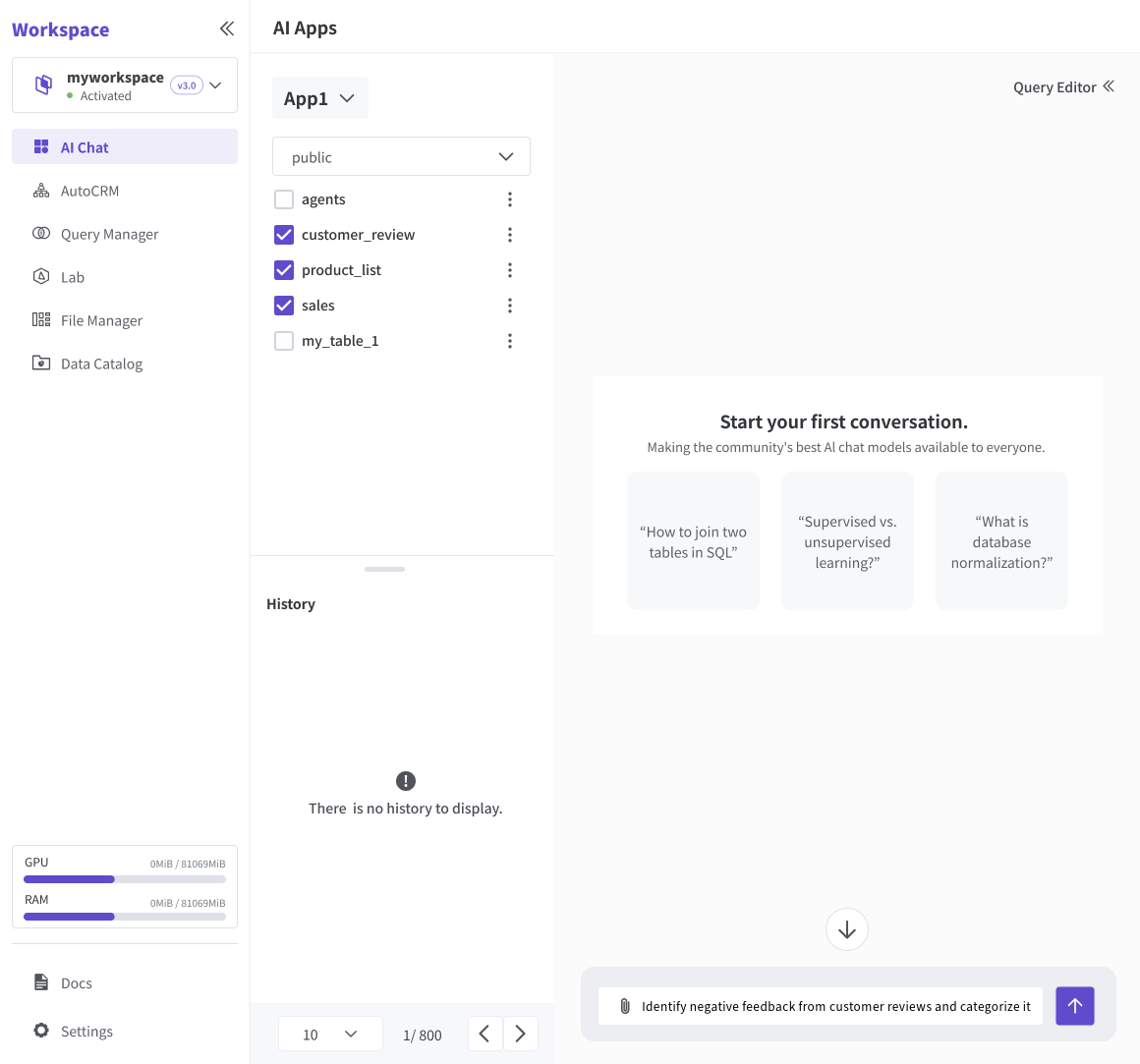
In this example, customer reviews must be analyzed first, so the customer_review table is selected. Next, the product_list table is chosen to identify the product, followed by the sales table to check the sales volume.
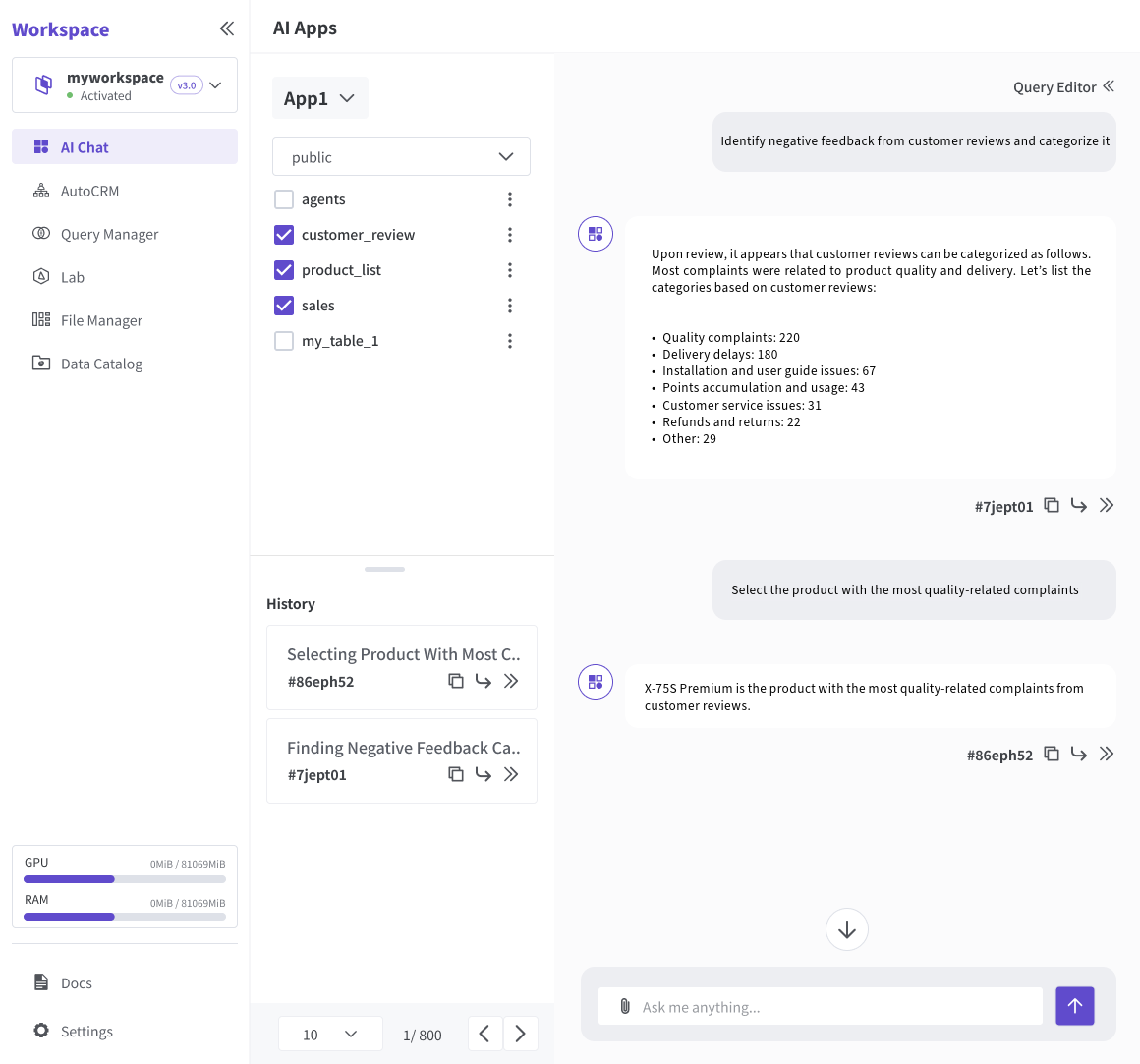
The natural language query is automatically converted into SQL commands executed on the selected tables, incorporating various AI algorithms and machine learning techniques. ThanoSQL provides these algorithms and models by default, but users can also import external models from platforms like Hugging Face. The results are then presented in natural language format in the output field.

With just a few natural language inputs, users can combine unstructured data, such as customer reviews, with structured data, like sales figures, viewing the results instantly.
In short, ThanoSQL is an analysis tool that allows users to perform interactive analysis of both structured and unstructured data stored in tables by combining machine learning and LLM. With ThanoSQL, users without technical expertise can quickly analyze all company data and derive meaningful insights.
What distinguishes ThanoSQL from other LangChain-based solutions?
Typically, the tech stack required to develop LLM services using LangChain is illustrated in the figure below.
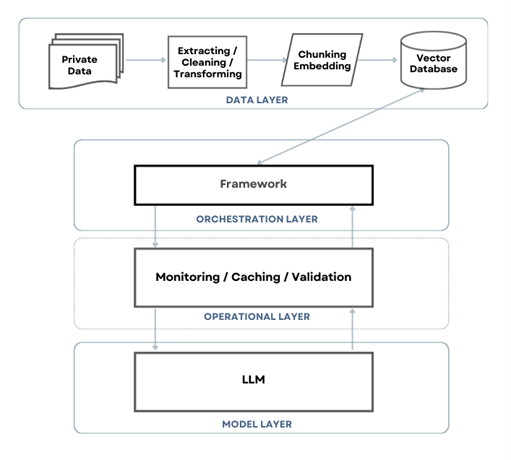
There are numerous product choices at each layer and even within individual components, and the chart does not cover everything.
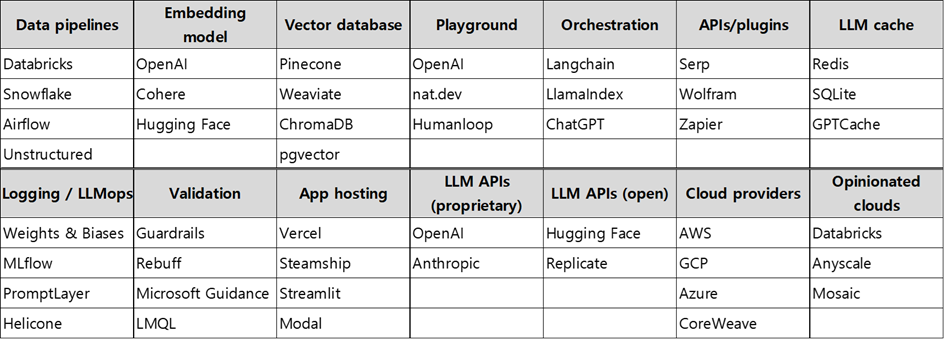
Companies aiming to build LangChain-based LLM services and integrate them into their tech stack face the challenge of selecting, purchasing, connecting, and managing a wide range of tools that data experts require.
Most companies lack these capabilities, and since they need to integrate disconnected tools and services, adopting LLM seamlessly requires significant time, cost, and specialized talent.
In contrast, with ThanoSQL, all those concerns and efforts become unnecessary. Users simply need to decide whether to use ChatGPT 4.0 as their LLM model or choose Hugging Face's open-source model.
Another difference is the flexibility and speed of data analysis. The illustration below shows an example of using ThanoSQL to identify which customer support representative spent the most time on calls with customers.
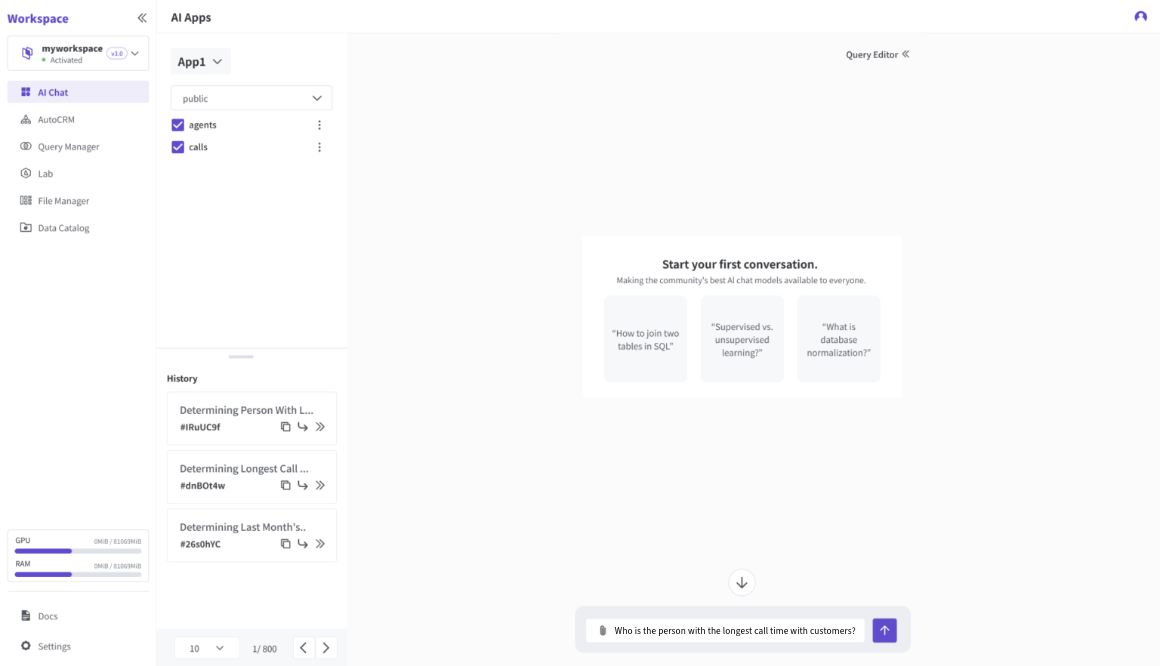
The following figure shows how the user's natural language query was converted into SQL and the execution results.
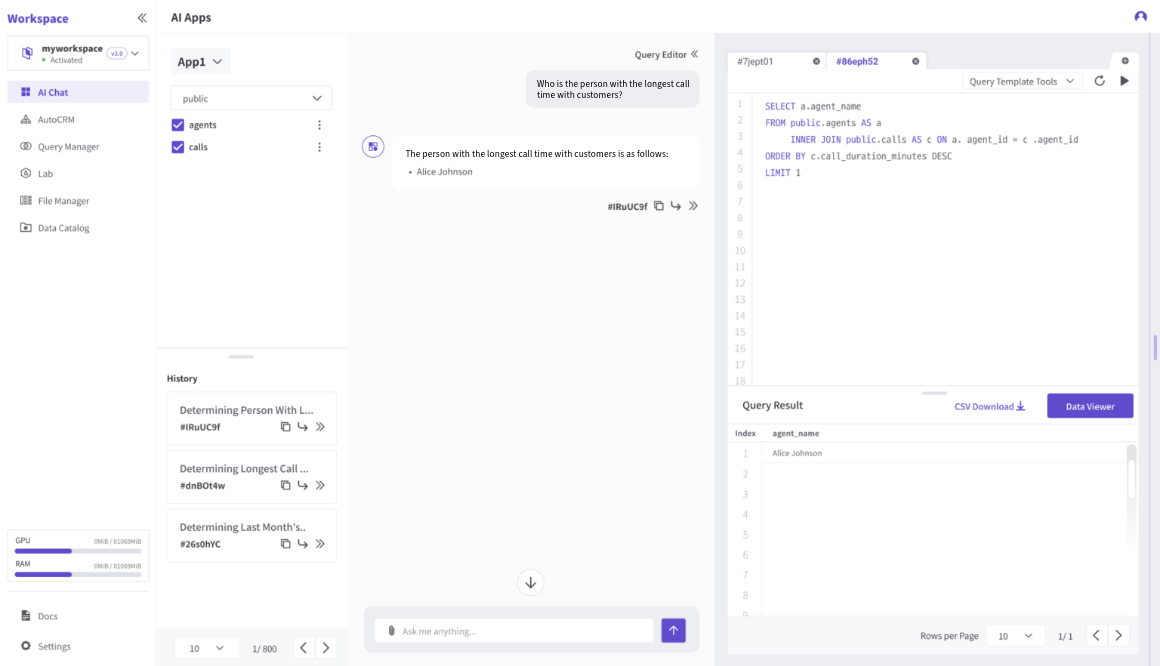
If you need to run a different analysis from your original query, you can simply update the SQL command and get the results instantly.
With LangChain, though, since it is built on Python, functions are essentially locked behind preset code, so making quick adjustments is not as straightforward.
Conclusion
Setting up an LLM service with LangChain also requires integrating a complex array of technical tools, much like managing a full-scale SI project, and usually means revisiting and refining workflows repeatedly. For this reason, adopting ThanoSQL, which provides LLM and data analysis in a single-platform format, is a more efficient decision for everyone—not only in terms of time and cost but also for ease of use.